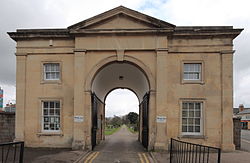| Reading Old Cemetery | |
|---|---|
 Section of Reading Old Cemetery | |
 | |
| Details | |
| Established | 1842 |
| Location | |
| Coordinates | 51°27′12″N0°56′45″W / 51.4532°N 0.9459°W [1] |
| Size | 11.5 acres (47,000 m2) |
| No. of graves | 18,327 |
Reading Old Cemetery (originally Reading Cemetery) is situated in the eastern part of Reading, Berkshire, England. It is located immediately to the east of Cemetery Junction, a major road junction in Reading. The cemetery is Grade II listed. [2]




